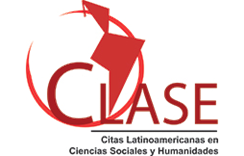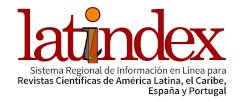TERRITORIAL SUSTAINABILITY AND GEOGRAPHICAL INDICATIONS: A PROPOSAL FOR FACTORS TO ASSESS OPPORTUNITIES AND BARRIERS IN GIS
DOI:
https://doi.org/10.54399/rbgdr.v18i3.6146Keywords:
Indicação geográfica. Território. Rio Grande do Sul. Políticas públicas. Desenvolvimento regional.Abstract
The topic of geographical indications in Brazil, although new, has grown in importance in the last two decades.The research aimed to systematize factors for assessing the sustainability of territories that have products with GI and for prospecting new GIs, allowing the evaluation, under the same basis, of different products and territories. The study used as theoretical and methodological basis the territorial approach and it was structured in five stages, which involved the search for theoretical and empirical references to the proposal and test of the framework. The systematized framework proposed 20 factors organized into five dimensions of sustainability (environmental, social, economic, political-institutional and territorial), which were unfolded into indicators. The test was carried out in eight regions of Rio Grande do Sul (four recognized, one in analysis and three in prospection or structuration), encompassing different products, categories, regions and degrees of maturity and development. The data were confirmed using triangulation of results with results from other studies, fieldworks and interviews with experts. The main results referring to the GIs of RS, point to the presence of products with territorial identity and the strengthening of territorial factors, with special emphasis on the performance of CTIs. The dynamism of the processes of the GIs, on the other hand, goes through political-institutional factors, especially governance, and in the structuring related to economic factors and the presence of professional management. Initiatives related to environmental factors can be strengthened, contributing to the sustainability of GIs and also positioning them as mechanisms for preserving biodiversity. The validated framework can be used in other contexts and future projects, by researchers, managers and formulators of public policies.
Downloads
Metrics
References
AGARWAL, S.; BARONE, M. J. Emerging issues for geographical indication branding strategies. Disponível em: <http://lib.dr.iastate.edu/matric_researchpapers/5>. Acesso em: 20 ago. 2018.
AGOSTINO, M.; TRIVIERI, F. Geographical indication and wine exports. An empirical investigation considering the major European producers. Food Policy, v. 46, p. 22–36, jun. 2014. Disponível em: <http://linkinghub.elsevier.com/retrieve/pii/S0306919214000268>.
BARHAM, E. Translating terroir: the global challenge of French AOC labeling. Journal of Rural Studies, v. 19, n. 1, p. 127–138, 2003. Disponível em: <https://www.sciencedirect.com/science/article/abs/pii/S0743016702000529>.
BARJOLLE, D.; PAUS, M.; PERRET, A. O. Impacts of geographical indications-review of methods and empirical evidences. 2009, [S.l.]: International Association of Agricultural Economists, 2009.
BOWEN, S. Embedding local places in global spaces: geographical indications as a territorial development strategy. Rural Sociology, v. 75, n. 2, p. 209–243, 2010. Disponível em: <https://onlinelibrary.wiley.com/doi/abs/10.1111/j.1549-0831.2009.00007.x>.
BRASIL. Decreto No 1.355 de 30 de dezembro de 1994. Promulga a Ata Final que Incorpora os Resultados da Rodada Uruguai de Negociações Comerciais Multilaterais do GATT. . [S.l: s.n.]. Disponível em: <http://www.planalto.gov.br/ccivil_03/decreto/antigos/d1355.htm>. , 1994
BRASIL. Lei No 9.279, de 14 de maio de 1996. . Brasília: Senado Federal. Disponível em: <http://www.planalto.gov.br/ccivil_03/leis/l9279.htm>. , 1996
BRUCH, K. L. Indicações geográficas para o Brasil: problemas e perspectivas. In: PIMENTEL, L. O.; BOFF, S. O.; DEL'OLMO, F. DE S. (Org.). . Propriedade intelectual: gestão do conhecimento, inovação tecnológica no agronegócio e cidadania. Florianópolis: Fundação Boiteux. Florianópolis: Fundação Boiteux, 2008. .
CRESWELL, J. W. Projeto de pesquisa: métodos qualitativo, quantitativo e misto. Porto Alegre: Artmed, 2010.
DALLABRIDA, V. R. Território, identidade territorial e desenvolvimento regional. São Paulo: Editora Liber Ars, 2013.
DEMATTEIS, G. Sistema Local Territorial (SLOT): um instrumento para representar, ler e transformar o território. In: ALVES, A. F.; CARRIJO, B. R.; CANDIOTTO, L., Z. P. (Org.). . Desenvolvimento territorial e agroecologia. São Paulo: Expressão Popular, 2008. p. 33–46.
FALCADE, I. As Indicações Geográficas (IG's) e a reorganização do espaço rural brasileiro. In: MARAFON, G. J.; RUA, J.; RIBEIRO, M. A. (Org.). . Abordagens teórico-metodologicas em geografia agrária. Rio de Janeiro: EdUERJ, 2007. p. 225–253.
FANTE, C. C. DE L.; DALLABRIDA, V. R. Governança territorial em experiências de Indicação Geográfica: análises e prospecções. Desenvolvimento Regional em debate: DRd, v. 6, n. 2, p. 228–246, 2016.
GIL, A. C. Métodos e técnicas de pesquisa social. 6a ed. ed. São Paulo: Atlas, 2011.
INAO. Les produits sous signe d'identidication de la qualité et de l'origine: chiffres-clés 2016. . Montreuil, FR: [s.n.], 2016. Disponível em: <https://www.inao.gouv.fr/>.
INPI (INSTITUTO NACIONAL DA PROPRIEDADE INDUSTRIAL - BRASIL). Instrução Normativa INPI No 25, de 21 de agosto de 2013. . [S.l: s.n.]. Disponível em: <http://www.inpi.gov.br/images/docs/instrucao_normativa_25_indicacoes_geograficas%5B2%5D.pdf>. Acesso em: 20 abr. 2015. , 2013
INPI (INSTITUTO NACIONAL DA PROPRIEDADE INDUSTRIAL - BRASIL). Instrução Normativa INPI No 95, de 28 de dezembro de 2018. . Brasília: [s.n.]. Disponível em: <https://www.gov.br/inpi/pt-br/servicos/indicacoes-geograficas/arquivos/legislacao-ig/INn095de2018.VersoocerizadaparaPortalINPI.pdf>. , 2018
JONSEN, K.; JEHN, K. A. Using triangulation to validate themes in qualitative studies. Qualitative Research in Organizations and Management: An International Journal, v. 4, n. 2, p. 123–150, 21 ago. 2009. Disponível em: <http://www.emeraldinsight.com/doi/10.1108/17465640910978391>.
LEFF, E. Racionalidade ambiental. Rio de Janeiro: Civilização Brasileira, 2006.
MAGNAGHI, A. Educare al territorio: conoscere, rappresentare, curare, governare. In: GIORDA, M.; PUTTILI, M. (Org.). . Educare al territorio, educare il territorio. Roma: Carocci, 2011. p. 32–42.
MAGNAGHI, A. Le projet local. Sprimont: Pierre Mardaga, 2000.
MAGNAGHI, A. The urban village : a charter for democracy and local self-sustainable development. New York: Zed Books, 2005.
NGO BAGAL, M.; VITTORI, M. Practical manual on geographical indications for ACP countries. . [S.l.]: Technical Centre for Agricultural and Rural Cooperation. Disponível em: <https://www.origin-gi.com/images/stories/PDFs/English/OriGIn_publications/manual_acpcomplet.pdf>. , 2011
NIEDERLE, P. A.; VITROLLES, D. Indicações Geográficas e qualificação no setor vitivinícola brasileiro. Estudos Sociedade e Agricultura, v. 18, p. 5–55, 2010. Disponível em: <https://revistaesa.com/ojs/index.php/esa/article/view/319>.
POLLICE, F. O papel da identidade territorial nos processos de desenvolvimento local. Espaço e cultura, n. 27, p. 7–24, 2010. Disponível em: <https://www.e-publicacoes.uerj.br/index.php/espacoecultura/article/view/3539>.
RAFFESTIN, C. A produção das estruturas territoriais e sua representação. In: SAQUET, M. A.; SPOSITO, E. (Org.). . Territórios e territorialidades: teoria, processos e conflitos. São Paulo: Expressão Popular, 2009. p. 17–36.
RANGNEKAR, D. The socio-economics of geographical indications. UNCTAD-ICTSD Project on IPRs and Sustainable Development, Issue Paper, v. 8, p. 13–15, 2004. Disponível em: <https://unctad.org/system/files/official-document/ictsd2004ipd8_en.pdf>.
SAQUET, M. A. Abordagens e concepções de território. São Paulo: Expressão Popular, 2007.
SAQUET, M. A. Por uma abordagem territorial. In: SAQUET, M. A.; SPOSITO, E. S. (Org.). . Territórios e territorialidades: teoria, processos e conflitos. São Paulo: Expressão Popular, 2009. p. 73–94.
STRAUSS, A.; CORBIN, J. Bases de la investigación cualitativa: técnicas y procedimientos para desarrollar la teoría fundamentada. Medellín, Colombia: Editorial Universidad de Antioquia, 2002.
TONIETTO, J. Afinal, o que é terroir? Bom Vivant, v. 8, n. 98, p. 8, 2007. Disponível em: <http://www.cnpuv.embrapa.br/publica/artigos/>.
TONIETTO, J.; MILAN, J. Arranjo produtivo local Vale dos Vinhedos. Bento Gonçalves/RS: Embrapa, 2003.
VALENTE, M. E. R.; PEREZ, R.; FERNANDES, L. R. R. DE M. V. O processo de reconhecimento das indicações geográficas de alimentos e bebidas brasileiras: regulamento de uso, delimitação da área e diferenciação do produto. Ciência Rural, v. 43, n. 7, 2013. Disponível em: <https://www.scielo.br/scielo.php?pid=S0103-84782013005000076&script=sci_abstract&tlng=pt>.
WIPO (WORLD INTERNATIONAL PROPERTY ORGANISATION). The definition of geographical indications. Disponível em: <http://www.wipo.int/geo_indications/en/>. Acesso em: 17 jul. 2020.
Downloads
Published
How to Cite
Issue
Section
License
Copyright (c) 2022 Revista Brasileira de Gestão e Desenvolvimento Regional

This work is licensed under a Creative Commons Attribution-NonCommercial 4.0 International License.
Authors who have their papers accepted and published in the Brazilian Journal of Regional Management and Development must agree to the copyright policy CC BY https://creativecommons.org/licenses/by/4.0/.
If the article is accepted for publication, the copyright is automatically assigned to the Brazilian Journal of Regional Management and Development.


















